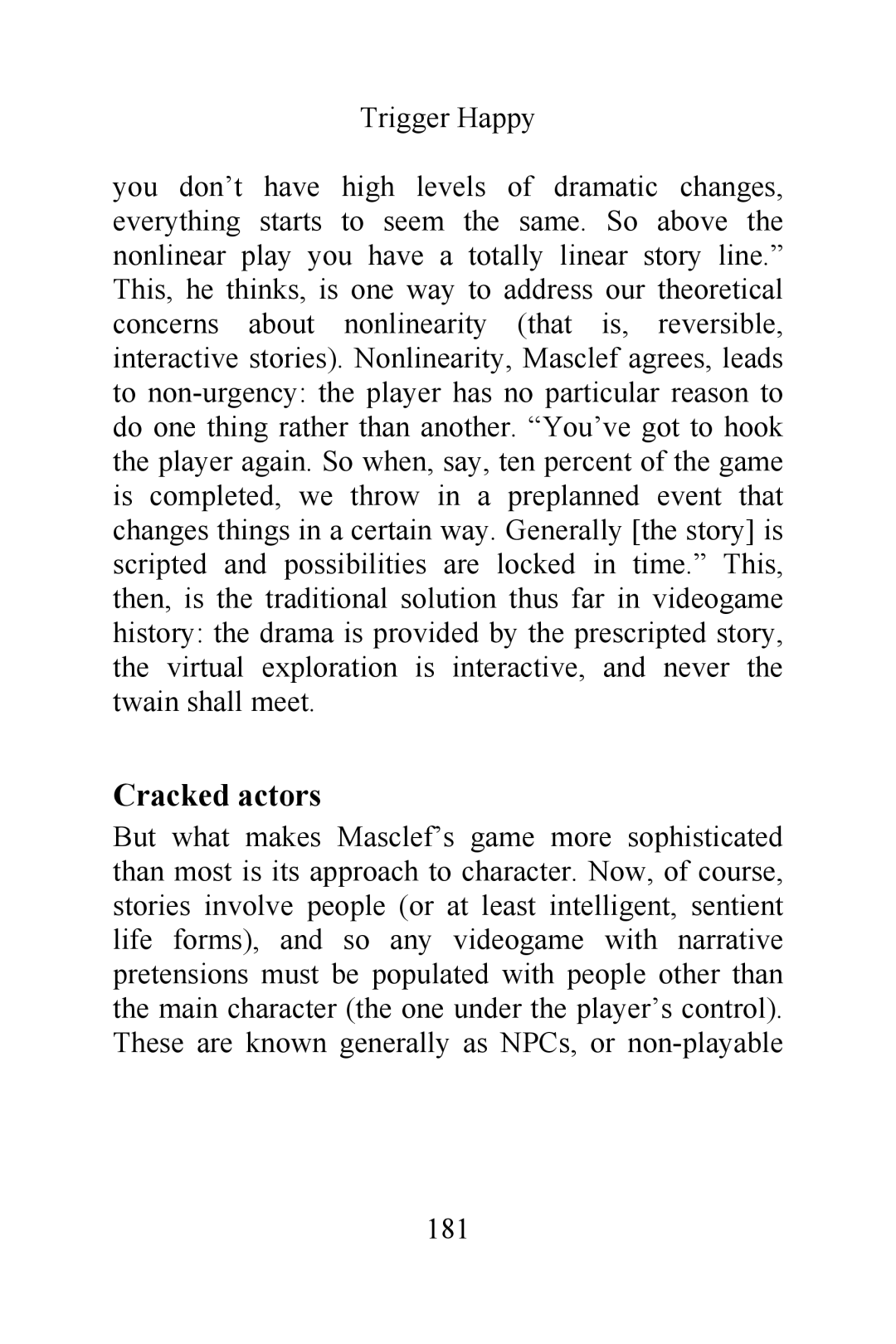Trigger Happy
you don’t have high levels of dramatic changes, everything starts to seem the same. So above the nonlinear play you have a totally linear story line.” This, he thinks, is one way to address our theoretical concerns about nonlinearity (that is, reversible, interactive stories). Nonlinearity, Masclef agrees, leads to
Cracked actors
But what makes Masclef’s game more sophisticated than most is its approach to character. Now, of course, stories involve people (or at least intelligent, sentient life forms), and so any videogame with narrative pretensions must be populated with people other than the main character (the one under the player’s control). These are known generally as NPCs, or
181
